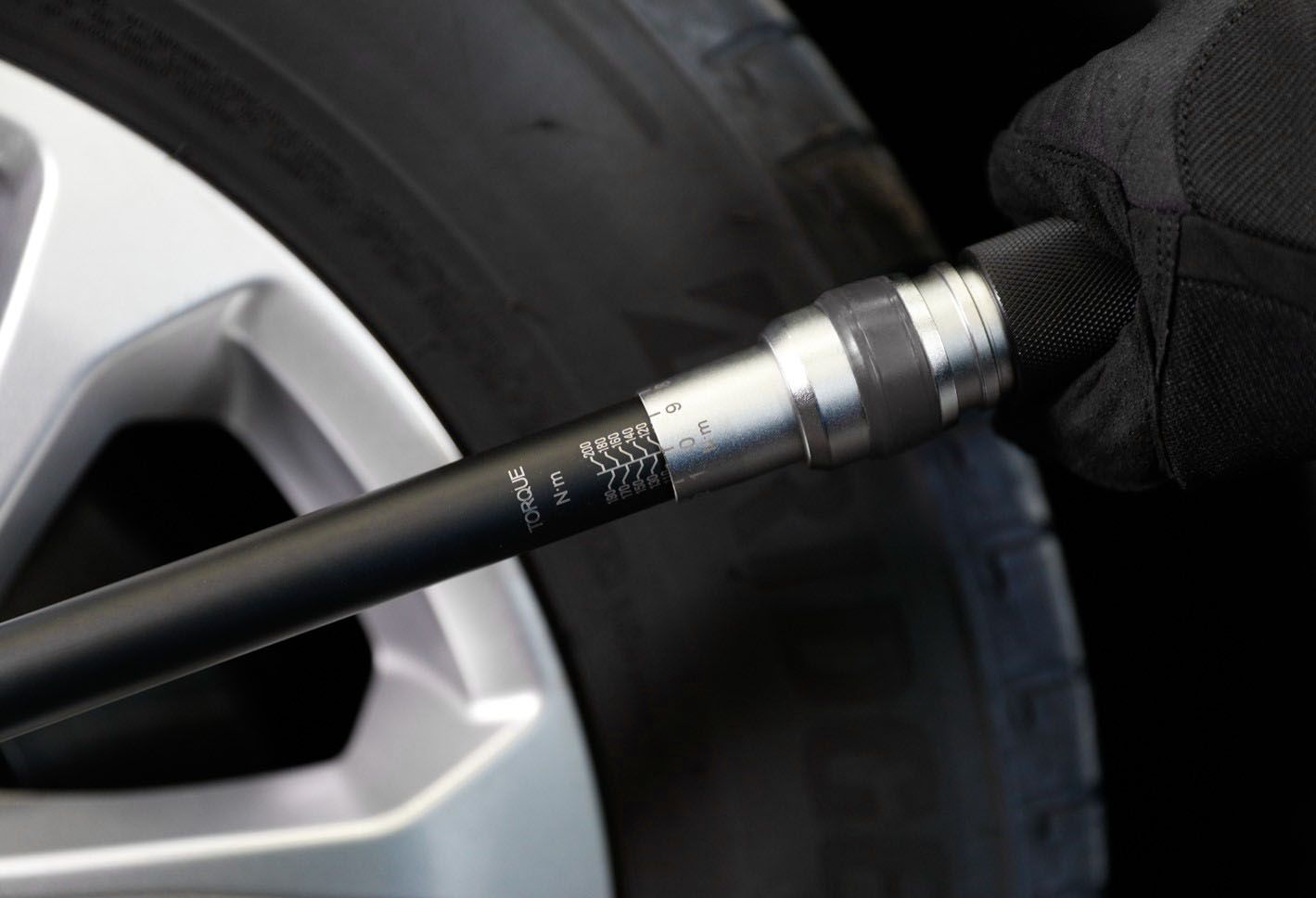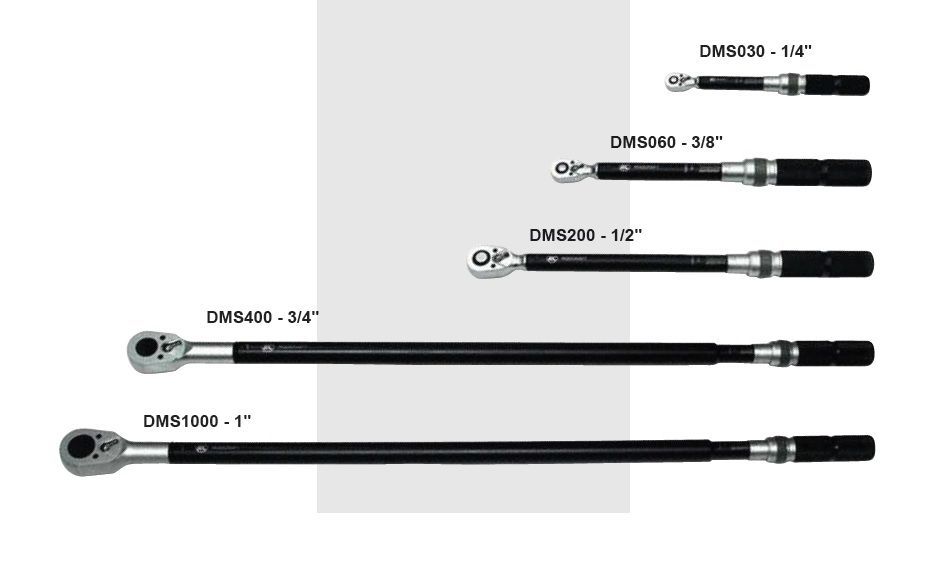What is a torque wrench ?

Used in car garages or in industry, a torque wrench is used to check and adjust the tightening torque of bolts, screws and nuts.
A torque wrench is a precision tool which guarantees reliable and quality tightening. Its use is essential to avoid any deterioration or breakage on the various clamping parts.
The tightening torque is expressed in Newton Meter (N.M). The N.M represents the moment of a force of 1 newton with a lever arm of 1 meter.
Depending on the type of application and the materials, it is advisable to tighten to the right torque, referring to the instruction manual.
Here are some steps to help you make your choice:
- Torque from 1 to 20 N.m: for tightening on fragile parts (carbon bike, small aluminum parts, etc.)
- Torque from 20 to 150 N.m: for cars, motorcycles (cylinder heads, damper pulleys, rims, etc.)
- More than 150 N.m: utility or agricultural use, for very high tightening forces.
The different types of torque wrenches
Depending on your activity, the materials to be clamped together or the space available, the type of torque wrench should be adapted
Click wrenches
For easy, practical and quick use, the trigger wrenches indicate via an audible or sensitive signal once the torque value is reached. It suffices to set the desired tightening torque directly on the wrench before use.
Click wrenches come in handy when you need to do an operation quickly or when the light is low
Digital torque wrench:
For applications where the tightening torque must be very precise, direct reading wrenches directly display the torque value allowing you to optimize the tightening.
Hydraulic assisted wrenches:
These wrenches are designed to achieve very high tightening torques that are difficult to reach manually.
Why is it important to use a torque wrench?
As we have just seen, respecting the tightening torque is essential in all mechanical applications. Under tightening or over tightening can have serious consequences.
Take the example of tightening wheels in an automotive context.
Changing tires in a mechanical workshop is a common activity and it is important to do these operations quickly in order to increase profitability. Despite everything, the safety of motorists is paramount.
Over-tightening and under-tightening lug nuts can lead to potentially catastrophic wheel failure. Lug nuts that are too tight can be damaged, stretched and broken, especially when hitting potholes and bumps in the road. Lug nuts that are under-tightened can back out or come loose, causing premature wear and separation of the wheel from the hub. Uneven tightening of the nuts on the same wheel is also a problem: it can lead to broken nuts, movement, vibration and even the wheel coming off.
It is therefore essential to manually check the tightness of the nuts using a torque wrench.
How to properly tighten your car wheel?
We have just seen that over / under tightening can have serious consequences. Follow these steps to securely tighten your wheels
1 - Preparation
• Inspect the nuts before reassembling the wheel to verify that they are suitable for the intended use. If there are cracks, deformations or fatigue, change them
• Make sure the nuts and studs are clean (mud, salt or rust). If dirt has accumulated, it will affect the quality of the tightening. Remember to clean them if necessary
• Lubricate nuts and studs. This can be done using a small manual oil pump, placing 1 drop of oil between the nut and washer, and rotating the washer to distribute the oil evenly.
• Star tighten nuts, i.e. first tighten opposite nuts next to each other rather than side by side. This ensures good contact between the wheel and the hub.
2 - Use a pneumatic impact wrench to perform the pre-tightening (approach) operation. This operation can also be carried out with a battery electric shock wrench or a manual wheel wrench
3 - Adjust the torque wrench via the twist grip to achieve the desired torque. The values are indicated on the handle of the wrench
4 - Install the tightening sleeve on the end of your torque wrench. If the wheels are tightened on the rim, remember to use a socket with protection (socket metric wheel protector set) so as not to damage / scratch the rim when tightening,
5- Complete the tightening with the key until it clicks
• Screw clockwise. Screw in until you hear a click. Tighten the others in the order listed using the same technique.
• Use only one hand with a smooth and continuous motion. Most torque wrenches have a mark on the handle, this is to indicate where to apply pressure.
6 - Store the tool in a secure place. A torque wrench needs to be handled and stored with precision.
Rodcraft advice
1 - A torque wrench is a tightening tool. It is a very sensitive and precise tightening tool, which should never be used to loosen bolts.
2 - At the end of each day, or when not in use, the torque wrench should be reset to the lowest value to relieve spring pressure.
3 - A torque wrench helps prevent but does not prevent over tightening! When the required torque is reached, the wrench torque control system will be “activated” and the operator will hear a clear click. If you hear this "click" without moving the key at the start, it means the application has already been too tight. A good practice here is to start over: First loosen the bolt, tighten with a suitable tool, and finish with the torque wrench to achieve the correct and safe torque.
4 - Control & calibration of the key once a year.
5 - Tool Maintenance: As a high precision tool, a torque wrench should be recalibrated at a regular frequency, and it is the responsibility of the user of the tool. At Rodcraft, we recommend that the tool be recalibrated annually, or every 5,000 cycles, at an official service center. Not to mention that if the tool is dropped or damaged, it must be put back into service immediately.
In conclusion we recommend that you check and finish your tightening using a torque wrench as soon as you start to tighten a bolt, screw or nut. Manufacturers usually provide tightening torques for the cylinder head, rims, drain plug, shock absorbers, oil filters, connecting rods, camshaft, etc.
At Rodcraft we have a wide range of torque wrenches. Discover the range !








